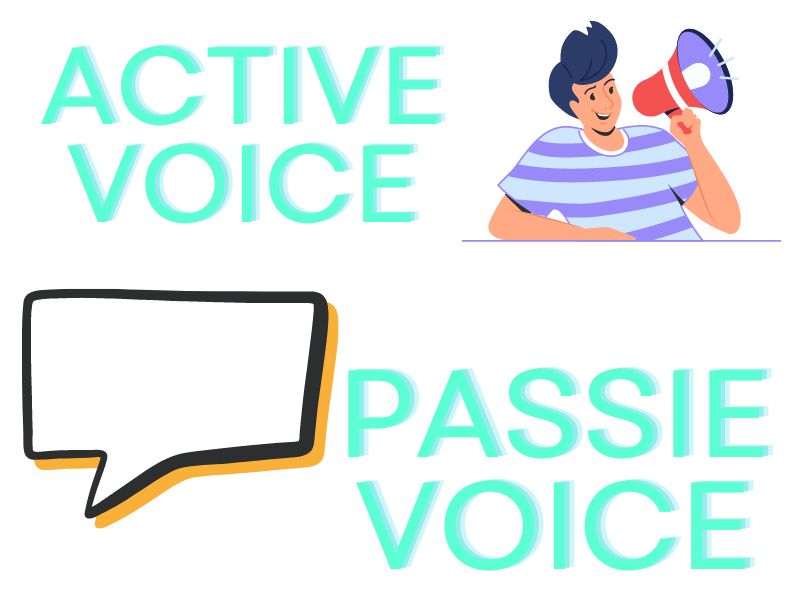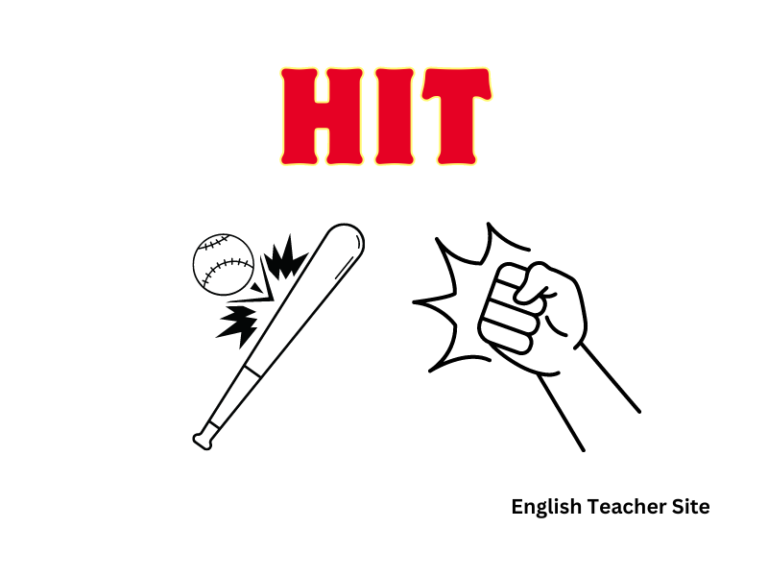Active vs Passive Voice Explained: Examples and Practice Questions for Clarity in Writing

Understanding the difference between active and passive voice is a critical component of proficient writing and competent grammar. The active voice is straightforward and assertive, providing clarity and dynamism to a sentence. It places the subject at the forefront, making clear who or what is performing the action.
For example, “The teacher explains the lesson,” clearly identifies ‘the teacher’ as the one doing the explaining.
Conversely, the passive voice often introduces a degree of ambiguity, as the subject receiving the action is put into the spotlight, and the doer of the action may be omitted altogether.
Sentences like “The lesson is explained” focus on the action being received, leaving the actor either implied or expressed later in the sentence, as in “The lesson is explained by the teacher.”
Fundamentals of Active and Passive Voice
Understanding the difference between active and passive voice is crucial for writing clearly and effectively. This section will explore what sets these two voices apart and how they function within a sentence’s structure.
Defining Active Voice
In active voice, the subject of the sentence performs the action denoted by the verb. The focus is on the doer of the action. This voice tends to make sentences more direct and dynamic. Here is a basic structure for the active voice:
- Subject + Verb + Object
Example:
| Subject | Verb | Object |
|---|---|---|
| The baker | bakes | the bread |
Using active voice, the sentence reads:
- The baker bakes the bread.
Defining Passive Voice
The passive voice occurs when the subject is the recipient of the verb’s action. In passive sentences, the focus shifts from the doer to the receiver of the action, often making the sentence less direct. The usual structure involves the be verb plus a past participle to construct the passive form:
- Object + “be” verb + Past Participle + (by Subject)
Examples:
- The bread is baked by the baker.
- The forms were signed by the students.
To further clarify, here’s a table comparing active and passive voice:
| Active Voice | Passive Voice |
|---|---|
| She writes the letters. | The letters are written by her. |
| The committee will review the proposal. | The proposal will be reviewed by the committee. |
In active voice, the subject (“She”, “The committee”) is doing the action of writing and reviewing, respectively. In passive voice, the subject of the sentence becomes the receiver of the action, with the original action doer often introduced by the word “by”.
Constructing Sentences
When constructing sentences, it’s essential to understand the differences in sentence structure that are determined by the use of the active or passive voice. Sentences in the active voice have the sentence subject performing the action, while the passive voice shifts the focus to the object or recipient of the action.
Sentence Structure in Active Voice
In the active voice, the sentence typically follows a clear and straightforward subject-verb-object pattern. Consider the sentence components in the active voice presented in the table below:
| Sentence subject | Main verb | Object |
|---|---|---|
| The chef | cooked | a delicious meal. |
- Sentence subject: The one performing the action.
- Main verb: The action performed by the subject.
- Object: The recipient of the action.
Examples of active voice sentences:
- The teacher assigns the homework.
- Players celebrate their victory.
Sentence Structure in Passive Voice
The passive voice, however, rearranges this structure to emphasize the action’s recipient. The subject is acted upon and often follows the auxiliary verb “be” and a past participle form of the main verb. Below is a table indicating the sentence structure in the passive voice:
| Auxiliary verb | Past participle form | Sentence subject | Prepositional phrase (optional) |
|---|---|---|---|
| is | prepared | The meal | by the chef. |
- Auxiliary verb: Helps form the passive and is paired with the past participle.
- Past participle form: The verb form used in passive constructions.
- Sentence subject: The recipient of the action.
- Prepositional phrase (optional): Indicates the performer of the action.
Examples of passive voice sentences:
- The homework is assigned by the teacher.
- Victory is celebrated by the players.
Using Transitive Verbs
- Transitive verbs are the backbone of both active and passive sentences because they transfer action to an object.
- They can be identified by asking “what?” or “whom?” after the verb.
In active voice:
- He (subject) kicks (transitive verb) the ball (object).
In passive voice:
- The ball (subject) is kicked (auxiliary verb + past participle) by him (prepositional phrase).
Remember that not all verbs are transitive; only those that can have an object are suitable for passive construction.
Grammatical Rules and Applications
Understanding the distinction between active and passive voice is central to mastering sentence construction in English. It hinges on whether the subject performs the action or is acted upon.
Grammar Rule for Voice
The fundamental grammar rule for determining voice in English involves identifying the relationship between the subject and the verb. In the active voice, the subject performs the action stated by the verb, while in the passive voice, the subject is acted upon by the verb.
Active Voice:
- The subject performs the action.
- Example: “The manager conducts the meeting.”
Passive Voice:
- The subject receives the action.
- Example: “The meeting is conducted by the manager.”
The Role of the Auxiliary Verb
The auxiliary verb is pivotal in constructing the passive voice. It combines with the main verb to express various nuances such as tense, mood, or voice.
Active Voice:
- Does not require an auxiliary verb for simple tenses.
- Example: “She writes a report.”
Passive Voice:
Tense Auxiliary Verb Example Present Simple is/are “The report is written by her.” Past Simple was/were “The report was written by her.” Future Simple will be “The report will be written by her.”
The Past Participle in Passive Sentences
In passive constructions, the past participle of the transitive verb is used regardless of the tense of the sentence. This component is crucial for forming the passive voice.
- Examples of past participles in passive sentences:
Active Voice Passive Voice “They delivered the package.” “The package was delivered.” “He will finish the task.” “The task will be finished.”
Transitive verbs are those that require an object to complete their meaning. Only transitive verbs can be used in the passive voice because there needs to be something that receives the action.
Voice in Different Contexts
The choice between active and passive voice in writing can influence readability, clarity, and the author’s intent. Each context, from academic to scientific writing, has its conventions regarding voice. Below, the use of active and passive voice is examined across different writing spheres, highlighting how they affect objectivity and responsibility.
Active Voice in Academic Writing
In academic writing, the active voice is preferred for its clarity and concise presentation of ideas. It places the subject at the forefront, making the intentions of the author clear.
| Advantages of Active Voice | Examples in Academic Writing |
|---|---|
| Enhances readability | “The researchers conducted an experiment.” |
| Empowers the subject | “Scholars critique the theory.” |
| Simplifies sentences | “Students discussed the issues.” |
Passive Voice in Scientific Writing
Conversely, scientific writing often employs the passive voice. This encourages a focus on the action rather than the actor, which can enhance objectivity—a cornerstone of the scientific method.
- Instances where passive voice is suitable:
- When the performer of the action is unknown or irrelevant: “The solution was heated to 100℃.”
- To describe a process where the outcome is more significant than the actor: “The data were analyzed.”
Conveying Objectivity and Responsibility
The passive voice can convey objectivity by removing the subject from the limelight, thus emphasizing actions and results rather than the person performing the action. However, this can sometimes diffuse responsibility, as the actor behind the action may remain ambiguous.
| Voice | Implication for Objectivity | Implication for Responsibility |
|---|---|---|
| Passive | Can heighten objectivity by focusing on the process or result. | May obscure responsibility, rendering it unclear who is accountable. |
| Active | Can imply subjectivity by emphasizing the individual’s actions. | Clearly assigns responsibility to the actor. |
When authors consider objectivity and responsibility in their work, they must choose the appropriate voice to align with their purpose and to adhere to the standards of their academic or scientific field.
Improving Writing Style
Effective writing style is characterized by clarity, directness, and a strong flow. These elements engage readers and convey messages with precision. The use of active voice often enhances these aspects, while passive voice is useful in particular contexts.
Achieving Clarity and Directness with Active Voice
Active voice simplifies sentences and improves readability by ensuring that the subject of the sentence performs the action. This leads to stronger, more direct statements. Here are some tips for using active voice:
- Identify the subject: Make sure the subject is doing the action.
- Remove unnecessary words: Active voice helps in avoiding a wordy construction, making the statement more concise.
Examples:
| Active Voice | Passive Voice |
|---|---|
| The researcher conducted the experiment. | The experiment was conducted by the researcher. |
| She submitted the report on Monday. | The report was submitted on Monday by her. |
Understanding When to Use Passive Voice
Passive voice places the emphasis on the action rather than the doer and can be useful in academic and formal writing. Here’s when to consider using passive voice:
- Emphasize the action: If the action is more important than who or what is performing it.
- Unknown subject: When the doer of the action is unknown or irrelevant.
In certain fields, like scientific writing, passive voice is regularly used to maintain an objective tone and focus on the actions taken rather than the person performing them.
Recommendations:
- Use sparingly: Passive voice can make statements less direct and harder to follow.
- Balance use: Mix passive voice with active voice to create a balanced flow.
Illustration:
| When to Use Passive Voice | When to Avoid Passive Voice |
|---|---|
| The novel was written by Harper Lee. | Harper Lee wrote the novel. |
| It is agreed by the committee to postpone the meeting. | The committee agrees to postpone the meeting. |
By mastering the use of active and passive voices, writers can enhance their writing style to communicate more effectively.
Avoiding Common Mistakes
In crafting well-structured sentences, writers must carefully distinguish between active and passive voice to enhance clarity. Misuse of either can lead to confusion and weaken the impact of a written piece. This section will guide you through common pitfalls and how to navigate them.
Correcting Ambiguity in Writing
Ambiguity often arises from the incorrect use of passive voice. Writers should strive for directness by ensuring the doer of the action is evident.
To edit ambiguous sentences:
- Begin with the agent performing the action.
- Remove unnecessary prepositions.
- Simplify the structure to clarify the doer and action.
Steps for Correction:
- Identify the agent.
- Reconstruct the sentence to lead with the agent.
- Verify the sentence clearly conveys the intended meaning.
By adhering to these guidelines, the writer reframes passive constructions into their active counterparts, significantly enhancing precision and readability.
Advanced Concepts and Usage
Exploring advanced concepts in active and passive voice unveils the subtleties of English syntax where verb forms convey nuanced meaning. Mastery involves understanding how to construct passive infinitives and the conjugation of verbs in various tenses.
Passive Infinitives and Conjugation
Passive infinitives in English involve the word “to” followed by the past participle of a verb, often used with modal verbs. The structure is “to be” + past participle.
| Modal Verb | Active Infinitive | Passive Infinitive |
|---|---|---|
| can | to take | to be taken |
| may | to help | to be helped |
| should | to complete | to be completed |
The conjugated forms of verbs in the passive voice also follow a pattern where the appropriate form of “be” is used in conjunction with the past participle.
- Present Simple: Sushi is served daily.
- Past Simple: The meal was prepared by the chef.
- Future Simple: The report will be reviewed by the team.
Active and Passive Voice Variations in Different Tenses
Active and passive voice can be expressed in all tenses. Here’s how active and passive voice variations work across different tenses:
Past Continuous
- Active: They were preparing the annual report.
- Passive: The annual report was being prepared.
| Tense | Active Form | Passive Form |
|---|---|---|
| Present Perfect | has/have completed | has/have been completed |
| Past Perfect | had finished | had been finished |
| Future Perfect | will have done | will have been done |
It is critical to choose the correct tense and corresponding passive or active voice to convey the intended meaning clearly and accurately. Understanding these complex constructions enhances one’s ability to write and speak with sophistication and precision.
Wrapping Up
In this article, the nuances of active and passive voice in writing have been explored. Active voice strengthens prose, providing clarity and dynamism. Conversely, passive voice can be practical for emphasis or stylistic choices, although often criticized for potential ambiguity.
Key Distinctions of Each Voice:
Active voice:
- Subject performs the action
- Direct and engaging narrative
- Often more concise and clear
Passive voice:
- Subject receives the action
- Can create a formal or objective tone
- Useful when the doer is unknown or unimportant
When to Use:
| Active Voice | Passive Voice |
|---|---|
| To engage the reader | When focusing on the action rather than the doer |
| For clarity and digestibility | To create an impartial tone |
| In most academic and journalistic writing | In scientific writing where the focus is on process or result |
Understanding when and how to use each voice allows writers to craft their sentences with purpose, enhancing the readability and impact of their text.
My name is Khamis Maiouf. I am the creator of the English Teacher Site, dedicated to providing valuable resources and insights for students around the world. With a passion for education and a commitment to helping students enhance their skills, I aim to make English teaching more effective and enjoyable for both educators and students.





